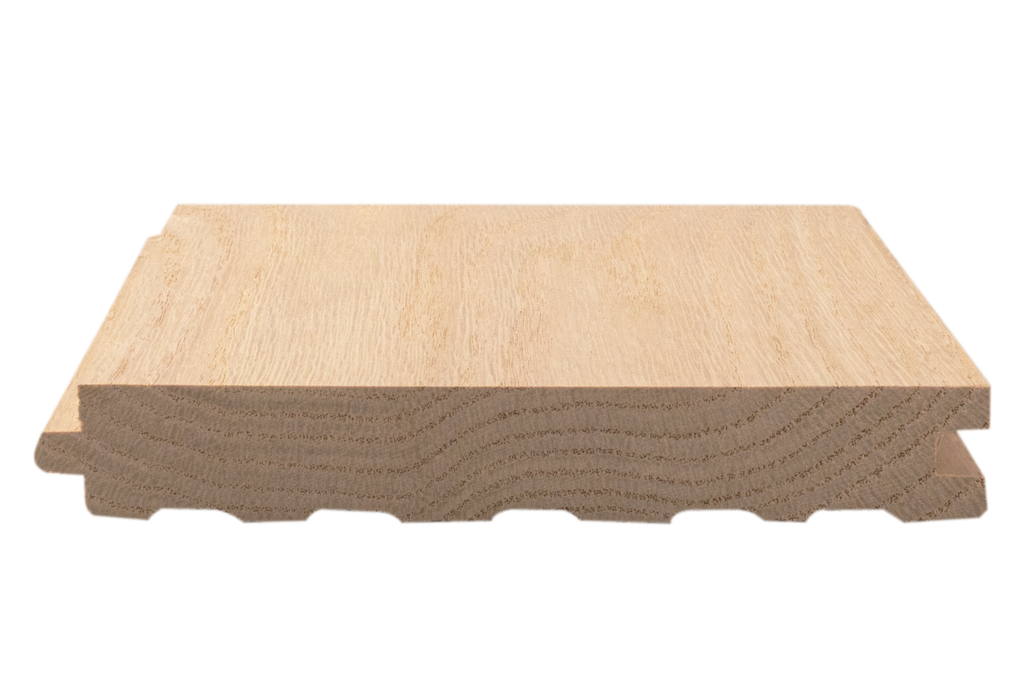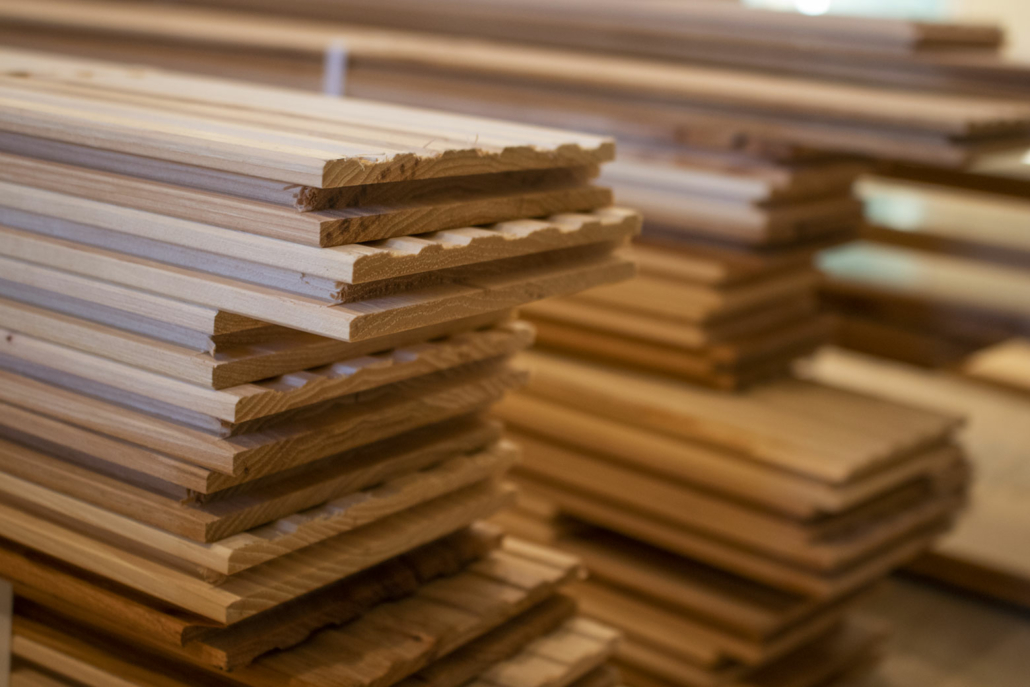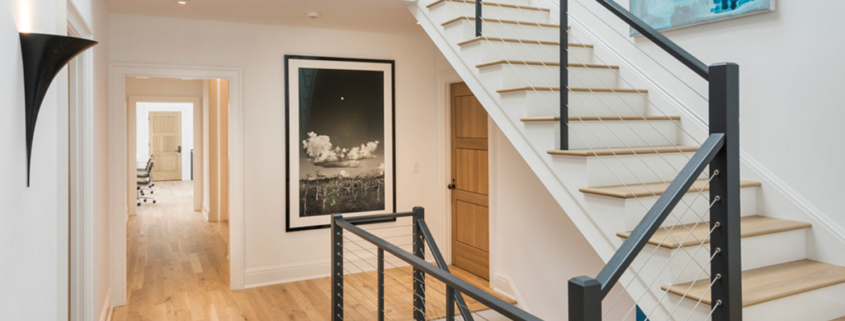An In-Depth Look at Tongue & Groove Hardwood Flooring
Hardwood flooring that features tongue and groove boards is today’s industry standard, and for good reason. Even though flooring fads come and go, the popularity of tongue and groove wood flooring is nothing new. In fact, it’s been used since the Industrial Revolution. (For you non-history buffs, that was between the late 1700’s and mid-1800’s.) There are a lot of perks that come with this type of flooring, which makes it one of the only contenders for your hardwood flooring home improvement.
What Is Tongue & Groove Flooring?
Tongue and groove flooring was developed over 200 years ago when manufacturers gained the ability to mass produce hardwood planks to fit together by design, eliminating the need for floorboards that are face-nailed.
Tongue and groove planks are made so that one edge has a tongue side (a protruding ridge) and the other side features a groove (with a depth as deep as the tongue is long). Both run the entire length of the board and across the grain for end-matched tongue and groove. The boards are made so that the tongue side fits within the groove side of the neighboring board, letting them lock together for a seamless, tight fit.
This differs greatly from previous types of hardwood flooring: flat edge planks that were face-nailed (and allowed gaps to open up from humidity changes), and shiplap-type boards (that had an L-shape edge, which helped to conceal any gaps that occurred after installation).
Types of Tongue and Groove Flooring
There are several types of flooring that utilize tongue and groove planks. Some laminate flooring and vinyl plank flooring use tongue and groove boards that lock together. Of course, these tend to lack the durability and the classic beauty of hardwood flooring. And, while tile flooring is durable, it can crack when an object is dropped.
When it comes to wood, you can purchase tongue and groove boards in a variety of hardwood species and even engineered wood. Engineered tongue and groove boards can have a similar installation to solid hardwood flooring by being nailed to the subfloor. They can also utilize a floating floor installation technique, although we don’t recommend it. A better option would be a glue-down installation.

Pros and Cons of Tongue and Groove Hardwood Flooring
There are a lot of perks that attract homeowners to tongue and groove hardwood flooring. But before you make a decision, it’s important to weigh the pros and cons.
Pros to Tongue & Groove

The growing and enduring popularity of tongue and groove flooring makes a lot of sense, given its many benefits. Here are some of the top reasons to consider using it in your home renovation:
Snug, Seamless Fit
When tongue and groove flooring came along, it allowed hardwood flooring to achieve a seamless fit. If you’ve ever gone into an old farmhouse, you probably noticed hardwood floors that had a pretty significant gap between boards. With tongue and groove, that is absolutely not the case. When finished onsite, no seams are visible at all. And, even when prefinished, the hardwood boards fit perfectly with a micro bevel (which allows the finished floors to be almost immediately installed)!
Long-Term Cost Savings
While laminate flooring and carpet can cost less per square foot, solid or engineered hardwood flooring doesn’t have to be considered more expensive, especially if you’re looking at it as an investment in your home!
Tongue and groove hardwood floors hold their value, are extremely durable and can be refinished multiple times (meaning that they last for decades while staying up-to-date as interior design styles change). If you opt for engineered wood floors, you can likely save a little more money and be in line with the cost of other materials.
Long-Lasting Quality
The tongue and groove method creates a seamless lock between planks. As we mentioned above, tongue and groove flooring can be refinished numerous times (lasting for decades), and even engineered hardwood flooring can be sanded and refinished up to two times!
Beautiful Variety
It’s no secret that hardwood flooring is beautiful and versatile. At Baird Brothers, you’ll find a large variety of wood species manufactured into tongue and groove planks – quarter sawn white oak, quarter sawn red oak, red oak, white oak, ash, cherry, hickory and more. The different hues and tones of the wood deliver the perfect look for any design style you’re trying to achieve.
DIY Flooring Installation is Possible
Another reason tongue and groove hardwood flooring is popular (and cost-effective) is due to the possibility of it being installed by homeowners themselves!
If you’re a fan of DIY woodworking and home improvement, then you can tackle your new flooring project on your own. So, grab your flooring nailer and get to work installing tongue and groove hardwoods! With a little bit of research time, motivation and TLC, you can get the job done right!.
Cons Tongue & Groove Hardwood Flooring
Now that we’ve told you all the great things about tongue and groove hardwood flooring, we have to keep things balanced and mention a few of the drawbacks.
DIY Can Take Some Time
Those new floors won’t get installed by themselves. It can take some time to install the planks, especially if you’re new to the process. The tongues can easily damage if you’re rough on them, so be sure to do your homework before beginning an installation.
Removal Can Be Difficult-ish
Once installed, these boards are installed. They can be very hard to remove from one another without compromising the planks.
How to Remove Tongue and Groove Flooring and Deinstallation
Removal or repair can be difficult – but just like installation, it is possible. Watch how it’s handled by the pros and you’ll be able to gauge whether or not your DIY skills are up to par.
Weighing Hardwood Flooring Options
Given the pros and cons, it’s clear that tongue and groove flooring is a solid choice for homeowners looking to renovate their floors – an option that can last a lifetime. Whether you opt for solid hardwoods or engineered wood flooring, It doesn’t take too much effort to learn how to install tongue and groove (or you can always opt to work with a professional)!

Better Floors Start With Baird Brothers
When you’re ready to grab your rubber mallet and get to putting down some brand new tongue and groove flooring, you want to make sure you’re using quality materials – and Baird Brothers Fine Hardwood Floors is here to help. We’ve been committed to providing quality hardwoods for 60+ years and plan to keep doing so for many more to come. When you’re ready to start your home improvement project, reach out or browse our online store – we can help you find exactly what you’re looking for.



